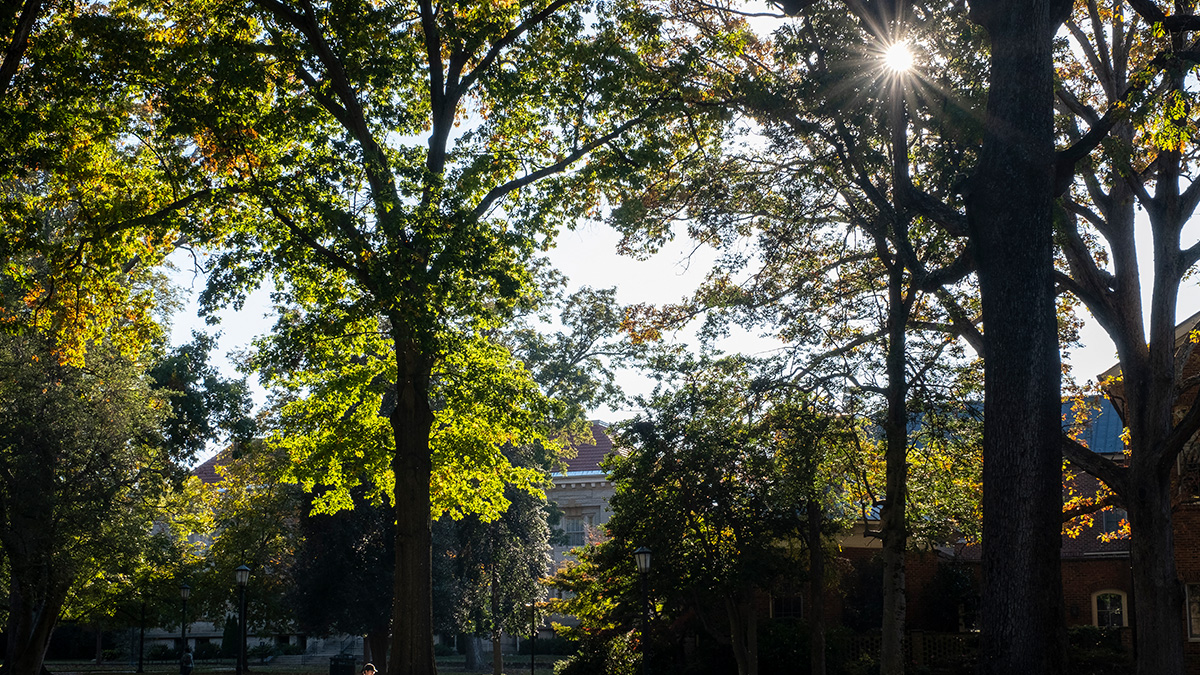‘And then there were two’
Carolina’s Dr. Aziz Sancar was awarded the Nobel Prize in Chemistry for his work mapping the cellular mechanisms that underlie DNA repair.
Wednesday the sun remembered to shine on Carolina, Chancellor Carol L. Folt said.
Even before sunrise, the spotlight found Aziz Sancar, the Sarah Graham Kenan Professor of Biochemistry and Biophysics in the School of Medicine. When he got a 5 a.m. phone call from Stockholm, he was still sleeping.
“My wife picked up the phone and said the person on the line says this is very important,” Sancar said. He took the phone and was told he had won the Nobel Prize in Chemistry.
Sancar, speaking at a press conference Wednesday afternoon at the School of Medicine’s Marsico Hall, said the first person he called was his goddaughter – “I woke her up because she doesn’t wake up until 9 a.m. usually.” The next person he called was his mentor, 96-year-old Claud “Stan” Rupert in Texas, who encouraged his interest in DNA in 1974 while Sancar was a graduate student at the University of Texas.
Sancar earned the award for his work on mapping the cellular mechanisms that underlie DNA repair, which occurs every single minute of the day due to outside forces, such as ultraviolet radiation and other environmental factors. In particular, Sancar mapped nucleotide excision repair, which is vital to UV damage to DNA.
When this repair system is defective, people exposed to sunlight develop skin cancer. Also, Sancar showed that other substances can damage the nucleotide excision repair system. His work provides the crucial basic knowledge necessary to develop better treatments that protect against DNA damage, which can result in cancer.
Sancar shares this award with two others: Thomas Lindahl of the Francis Crick Institute and Clare Hall Laboratory in Great Britain, and Paul Modrich of Duke University School of Medicine and the Howard Hughes Medical Institute.
During the press conference, Sancar recognized the work of Modrich. For the past 10 years, Sancar said, he has been nominating Modrich for a Nobel Prize.
Sancar also made sure to acknowledge the many students and colleagues who worked with him over the years to advance the work. Among those colleagues was his wife, Gwen, who he said worked with him for 15 years after they both joined the faculty here in 1982.
“I am very grateful to all of you and to the University of North Carolina,” Sancar said.
Folt said the day was a “celebration of science and the hard work of the individuals who actually do the science.”
It was no surprise, she said, that when she called to congratulate Sancar Wednesday morning he was back in his lab – working.
The most recent work was accomplished earlier this year when his team created a DNA repair map of the entire human genome.
“With this map, we can now say to a fellow scientist, ‘tell us the gene you’re interested in or any spot on the genome, and we’ll tell you how it is repaired,’” Sancar said. “Out of six billion base pairs, pick out a spot and we’ll tell you how it is repaired.”
Folt said it also was “a special moment for two very proud institutions” now connected in history with a shared Nobel.
“This is an extraordinarily exciting day,” said Michael Kaston, the executive director of the Duke Cancer Institute and William W. Shingleton Professor, Pharmacology and Cancer Biology. “I am a graduate of UNC and I work at Duke, and I couldn’t be more proud.”
Modrich, speaking on the phone, said he was stunned by the news.
“It’s been overwhelming,” Modrich said. Like Sancar, Modrich took time to recognize the postdoctoral students he said were responsible for much of the work that led to the award.
William Roper, dean of the School of Medicine and vice chancellor for medical affairs, said it was “a splendid day not only for our faculty member and our university, but for our partnership with Duke and science in this region.”
As he arrived, Roper sought out Oliver Smithies, the Weatherspoon Eminent Distinguished Professor in the School of Medicine. He spotted the scientist sitting in the front row by the stage. Eight years earlier, Smithies had been the one up there explaining how he won his Nobel.
Roper leaned over to Smithies and told him, “And then there were two.”
Click here for more.




